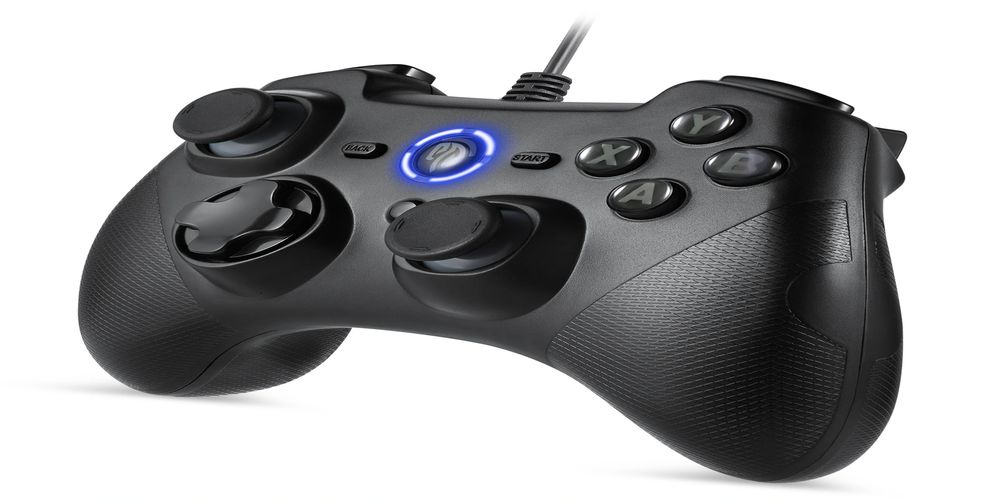PC games need controllers to work. Each input must be accurately measured and sent to the gaming system for proper user interaction. Standard buttons, pressure-sensitive buttons, and analog sticks are gaming controller inputs. Each input type needs unique circuitry to be accurately measured and transmitted.
The Push Button
As the most common and easiest-to-measure input on most gaming controllers, the push button is a good choice. Each button has an open circuit underneath it. Allowing the current to flow through the circuit is possible by pressing a button. The buttons are connected in series with a corresponding resistor, connected in parallel. A microcontroller inside the game controller measures the current flowing through each resistor. Each input circuit has an ammeter built-in. It's the microcontroller's job to detect any current flowing through a resistor, interpret it as the result of pressing the button connected to that resistor, and then send that information to the game.
Pressure-Sensitive Buttons
Pressure-sensitive buttons are analog inputs. Instead of determining if a button is pressed, the microcontroller must measure the pressure. A pressure-sensitive button presses a pressure-sensitive resistor. The user presses the button harder, resistance drops, and more current flows. The microcontroller acts as an ammeter to measure how hard the button is pressed and sends this information to the game.
Analog Stick
Analog sticks are the third controller input. The analog stick can be rotated within its circle. Two potentiometers measure the sphere's rotation to measure the analog stick's location. A wiper connected to a potentiometer is turned when the analog stick is rotated left and right (on the x-axis).
When the wiper turns to the left, it shortens the resistor between the ground pin and the output pin, reducing circuit resistance. When the analog stick moves to the left, the potentiometer current increases. The microcontroller measures this current like an ammeter to locate the analog stick on the x-axis and the y-axis potentiometer. These two currents transmit the analog stick's location to the game.
Final Thoughts
Each of these circuits is reliable when not interfered with, so game controllers have always measured user inputs the same way. Dust, grease, or food crumbs in the controller cause circuit failure. This prevents a push button's circuit from working. Dust and grease can avoid circuits of the potentiometer from detecting the analog stick's location.
Since analog sticks are prone to dust interference, the PS5 controller casing covers more of the sphere under the analog stick, reducing the chance of something getting stuck in it. Outside interference with internal circuits is still a problem in gaming controllers, especially after long use.
When pressed, a standard controller button switches a circuit. Pressure-sensitive buttons press on a force-sensitive resistor to increase circuit current. The analog stick rotates two potentiometers, changing their resistance and current flow. Each input acts as its own circuit and the amount of current flowing through that circuit measures that input. The game then responds. Effective and reliable controller input circuits have seen few changes, like in the easysmx gaming controller. Developers must find ways to protect the controller's input circuits from outside interference during each redesign.


